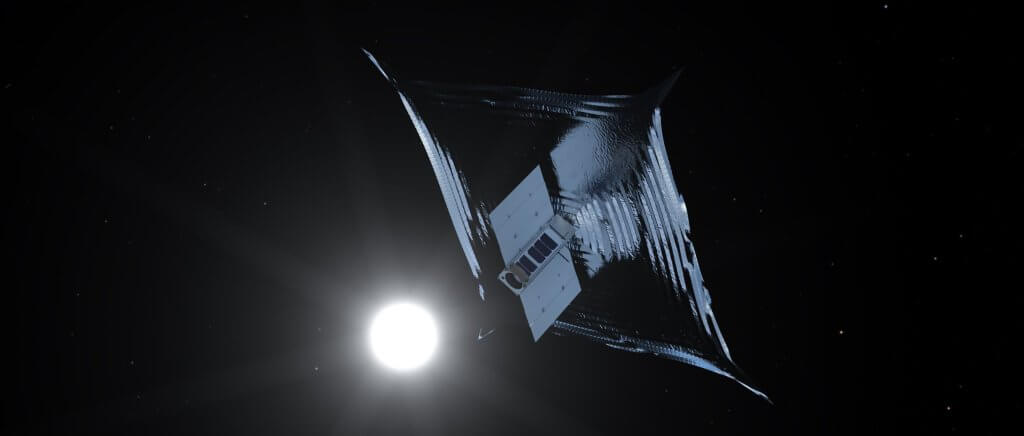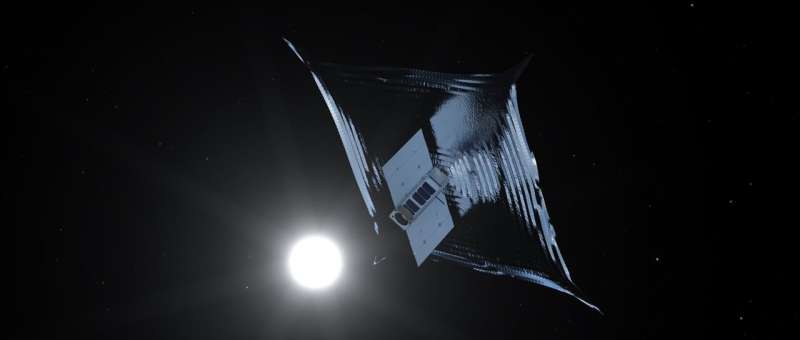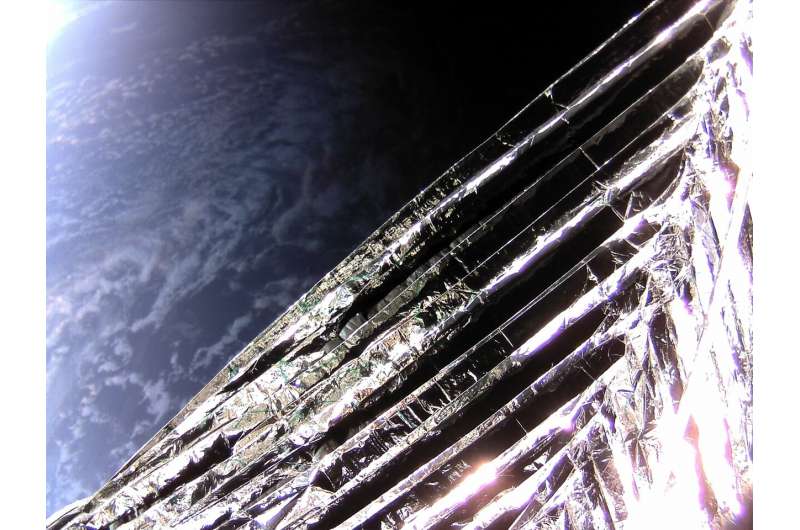
Successful in-flight demonstration of the ADEO braking sail (Image Credit: Phys.org)

The Drag Augmentation Deorbiting System (ADEO) breaking sail was successfully deployed from the ION satellite carrier in late December 2022. A sail area of 3.6 square meters was autonomously deployed from an impressively small packing size of 10 x 10 x 10 cm to demonstrate deorbiting satellite technology.
ADEO’s deployment was captured in front of the “eyes” of the integrated camera onboard the ION satellite carrier, as ADEO unfurled showing its “wings,” and immediately initiated the satellite’s descent—known as deorbiting. The image shows one edge of the sail—a large aluminum-coated polyamide membrane attached to four carbon-fiber reinforced booms, following its jack-in-a-box deployment.
The sail provides a passive method of deorbiting by increasing the atmospheric surface drag effect and causing an accelerated decay in the satellite’s orbital altitude. The satellite will eventually burn-up in the atmosphere, providing a quicker residue-free method of disposal. ADEO gently pushes the ION satellite carrier, as if it’s on “angel wings,” out of its orbit and towards Earth’s atmosphere.
Adeptly named “Show Me Your Wings” the ADEO-mission is the final in-flight qualification test needed to provide the technological proof-of-concept. A smaller 2.5 square meter sail was fitted onto the upper stage of the Electron launch vehicle “Its Business Time” mission in 2018 and several parabolic flights were performed from 2019 to 2022.
The ADEO test model is the smallest variation of the ADEO product family, designed especially for the de-orbit of small satellites in the 1–100 kg class range. The approach is however scalable for medium and large size satellites. Multiple units, on one satellite or an upper stage is also option, if the accommodation of a larger sail is unfeasible.
Tailor-made solutions depend on the initial orbit, satellite mass and required de-orbiting time. The largest variation can be as big as 100 square meters and take up to 45 mins to deploy. The smallest sail is just 3.5 square meters and deploy in just 0.8 seconds.

ADEO technology provides a safe, robust and sustainable method of passively de-orbiting small satellites. Passive methods of deorbiting are advantageous in eliminating the need for active steering, with no additional GNC or propulsion subsystem. The system can be designed for passive attitude stabilization and the approach is applicable for non-operational and tumbling satellites
Reliably removing satellites as they approach their system end-of-life, or satellites that have become unresponsive, is a key aspect in ESA’s ESA’s Zero Debris Initiative. Valuable orbits become available for use and the probability of unwanted collision decreases—which would only create the next generation of space debris.
Provided by
European Space Agency
Successful in-flight demonstration of the ADEO braking sail (2023, February 1)
retrieved 2 February 2023
from https://phys.org/news/2023-02-successful-in-flight-adeo.html
part may be reproduced without the written permission. The content is provided for information purposes only.





